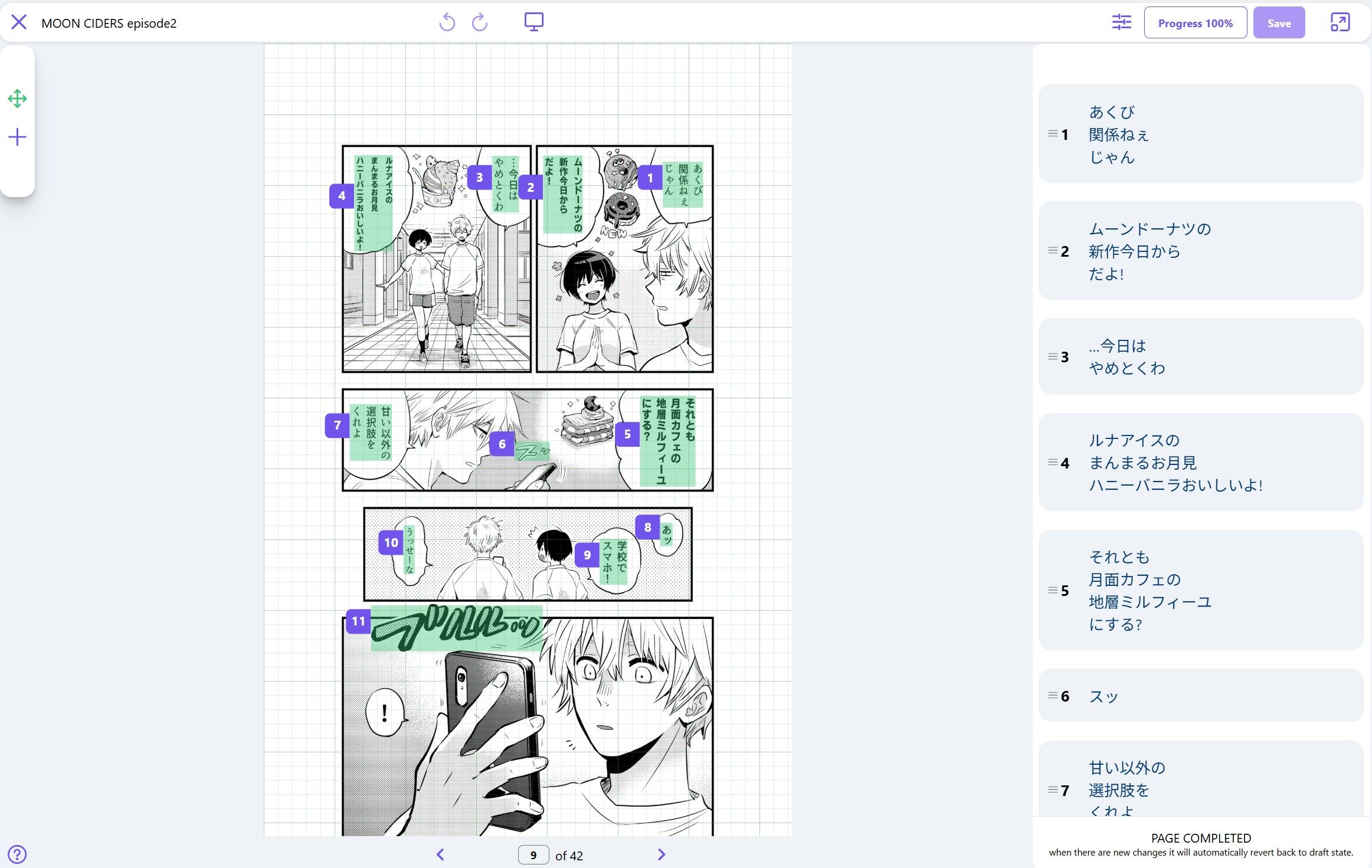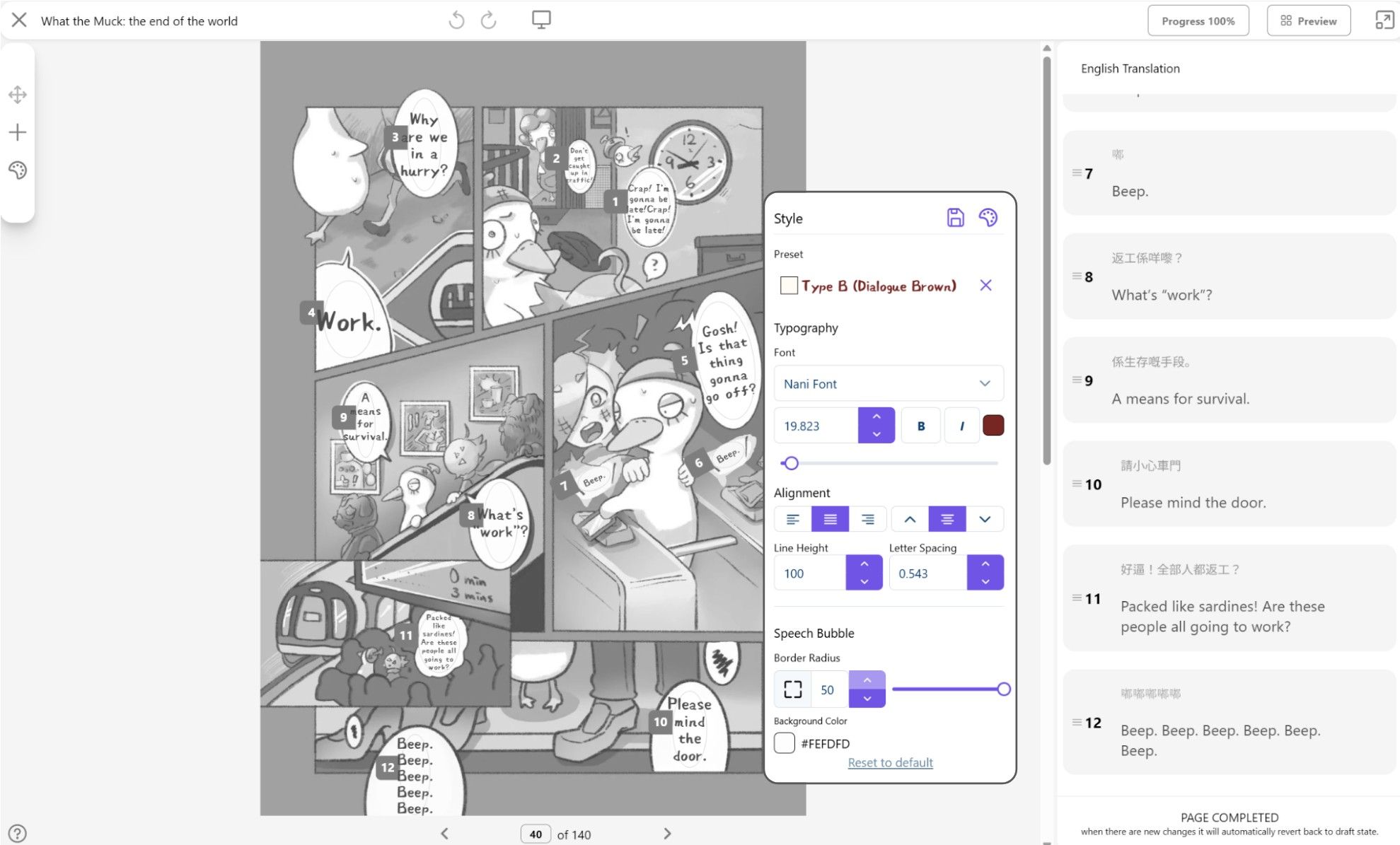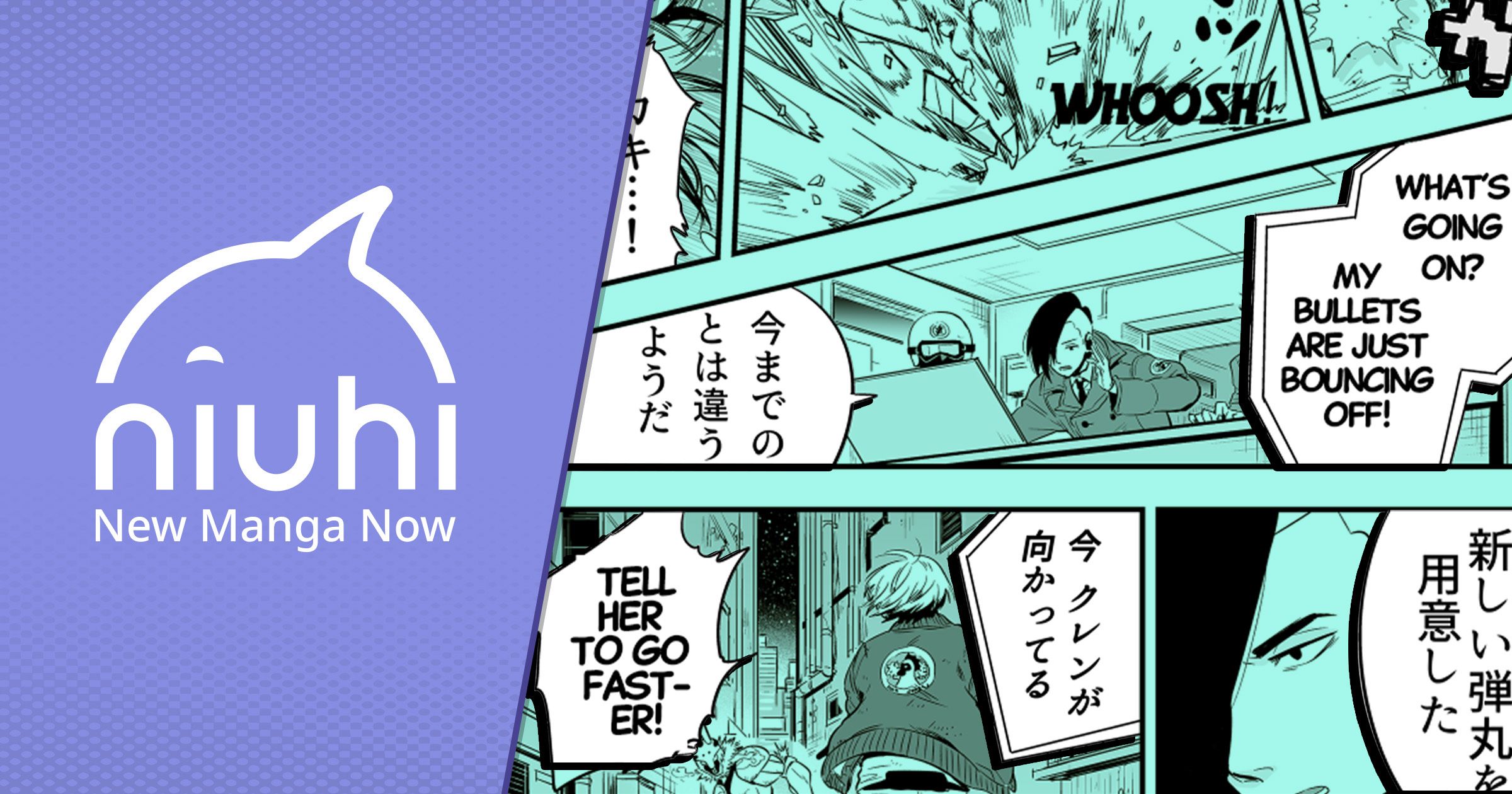Why We Built Our Own Translation Tool (Instead of Just Plugging in AI)
Let’s be honest—AI translation is fast. Like, "blink-and-it’s-done" fast. So why did we spend months building a native translation tool when we could’ve just slapped an AI plugin onto NIUHI and called it a day?
Well, here’s the thing: manga isn’t just words on a page—it’s emotion, culture, and artistry.
As one of the developers behind NIUHI’s translation system, puts it:
"When we first tested AI translations, the speed was impressive. But then we noticed something… off. Jokes fell flat. Cultural references got butchered. Character quirks disappeared. It was like watching a dubbed movie where the lips don’t match the words—technically functional, but emotionally hollow."
That’s why we chose a different path—one that respects both the original creator’s vision and the translator’s craft.
Human Touch > Machine Speed
- Nuance matters. A sarcastic remark in Japanese doesn’t always translate directly to English. A translator’s judgment ensures the tone stays intact.
- Cultural context isn’t optional. Ever seen a machine translate "senpai" as "upperclassman" and kill the vibe? Yeah, we have too.
- Artistry isn’t just text. Fonts, bubble shapes, and colors carry meaning—AI doesn’t care about aesthetics.
So, instead of treating translation as a "find-and-replace" task, we built a system that empowers translators to recreate the magic, not just replicate words.
How Translation Works on NIUHI (Step by Step)
Step 1: Upload & Prep
- A creator uploads their manga (PDF or EPUB).
- Our system automatically detects text (using OCR) and draws new speech bubbles over the original text.
- The original text is stored as a reference next to these new bubbles.

Why? Because now, translators have a clean slate to work with—empty bubbles, original text for context, and full control over adjustments.
Step 2: Fine-Tuning (Because Perfection Isn’t Automatic)
Before translation begins, creators or NIUHI staff can:
- Resize/reposition bubbles (so nothing looks awkward).
- Adjust original text placement (in case OCR missed a line).
This step ensures the manga stays visually flawless before translation even starts.
Step 3: Translation (Where the Magic Happens)
Translators don’t just upload a translated file—they work bubble by bubble:
- Add a translation (pick the target language).
- Fill in the empty bubbles (with the original text as reference).
- Adjust bubble size/text length (because German words are loooong).
Step 4: Styling (The Secret Sauce of Manga Translation)
This is where translators become artists:
- Font selection (matching the original’s vibe).
- Text size & color (readability + character voice).
- Bubble shape & edges.

Pro tip: Create style presets for efficiency—especially for long series with varied text treatments.
Translation on NIUHI Isn’t Just Swapping Words—It’s Storytelling Reimagined
At the end of the day, our translation tool isn’t about speed. It’s about preserving the soul of the story while adapting it for new audiences.
Because manga isn’t just read—it’s felt. And that’s something no AI can replicate.
So to all the translators out there: Your work isn’t just translation. It’s art. And we built NIUHI to celebrate that.
Now, go make some magic. 🎨✨
Want to try translating on NIUHI? [Sign up now] and bring your favorite stories to new readers!
